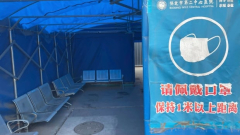LITTLETON, Colo. — When Lena Astilli first bought her home outside of Denver, she had no interest in matching the wall-to-wall green lawns that dominated her block. She wanted native plants — the kind she remembered and loved as a child in New Mexico, that require far less water and have far more to offer insects and birds that are in decline.
“A monoculture of Kentucky bluegrass is not helping anybody,” Astilli said. After checking several nurseries before finding one that had what she wanted, she has slowly been reintroducing those native plants to her yard.
Though Astilli was replacing grass just last month, it remains ubiquitous in American yards. It’s a tradition that began more than two centuries ago with the landed gentry copying the landscaping of Europe’s wealthy, and grass now dominates as the familiar planting outside everything from single-family homes to apartment complexes to office parks and retail malls.
“In the absence of simple directions and guidance about what to do with their landscape, they default to lawn because it’s easy,” said Mark Richardson, executive director of the Ecological Landscape Alliance, a nonprofit that promotes sustainable landscaping.
Yet that grass is problematic in deserts and any place with limited water, such as the American West, where it won’t do well without irrigation. As climate change makes the world hotter and triggers more extreme weather, including drought, thirsty expanses of groomed emerald are taxing freshwater supplies that are already under stress.
Enter xeriscaping — landscaping aimed at vastly reducing the need for irrigation, including by using native or drought-tolerant plants. (A utility here, Denver Water, says it coined the term in 1981 by combining “landscape” with the Greek word “xeros,” which means dry, to encourage reduced water use.)
The average U.S. family uses 320 gallons (1,211 liters) of water every day, according to the Environmental Protection Agency. Nearly a third of that is devoted to outdoor water use. It’s even more for people with thirsty plants in dry places.
“Potable water is going to become harder and harder to come by,” said Richardson. “Lawn reduction is a fantastic way to limit the use of water in the landscape.”
His group isn’t keen on grass even in areas like the Northeast or Midwest, where drought and water use aren’t as problematic as in the West. Less lawn means fewer pesticides and fertil





